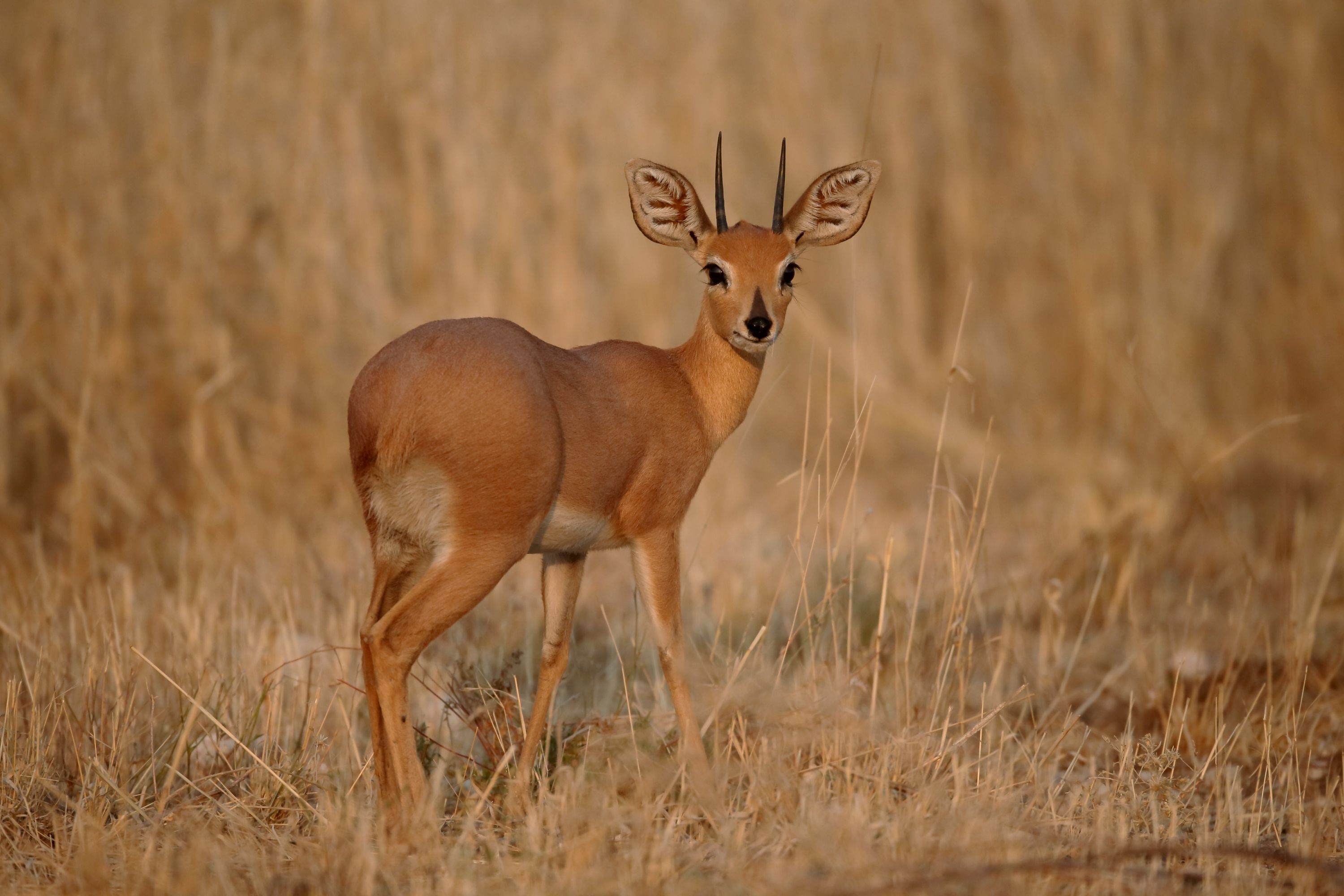Steenbok
(Raphicerus campestris)

Description
The steenbok (Raphicerus campestris) is a common small antelope of southern and eastern Africa. It is sometimes known as the steinbuck or steinbok. Steenbok resemble small Oribi, standing 45–60 cm (16"–24") at the shoulder, and average ~12kg. Their pelage (coat) is any shade from fawn to rufous, typically rather orange. The underside, including chin and throat, is white, as is the ring around the eye. Ears are large with "finger-marks" on the inside. Males have straight, smooth, parallel horns 7–19 cm long (see image left). There is a black crescent-shape between the ears, a long black bridge to the glossy black nose, and a black circular scent-gland in front of the eye. The tail is not usually visible, being only 4–6 cm long. There are two distinct clusters in steenbok distribution. In East Africa, it occurs in central and southern Kenya and northern Tanzania. It was formerly widespread in Uganda, but is now almost certainly extinct there. In Southern Africa, it occurs in Angola, Namibia, South Africa, Eswatini, Botswana, Mozambique, Zambia, Zimbabwe and probably Lesotho. Steenbok live in a variety of habitats from semi-desert, such as the edge of the Kalahari Desert and Etosha National Park, to open woodland and thickets, including open plains, stony savannah, and Acacia–grassland mosaics. They are said to favour unstable or transitional habitats. At least in the central part of Kruger National Park, South Africa, Steenbok show a distinct preference for Acacia tortilis savannah throughout the year, with no tendency to migrate to moister areas during the dry season (unlike many larger African savannah ungulates, including species sympatric with Steenbok in the wet season). Population density is typically 0.3–1.0 individuals per square kilometre, reaching 4 per km2 in optimal habitats. Steenbok typically browse on low-level vegetation (they cannot reach above 0.9 m), but are also adept at scraping up roots and tubers. In central Kruger National Park, Steenbok show a distinct preference for forbs, and then woody plants (especially Flueggea virosa) when few forbs are available They will also take fruits and only very rarely graze on grass. They are almost entirely independent of drinking water, gaining the moisture they need from their food.
Taxonomic tree:







